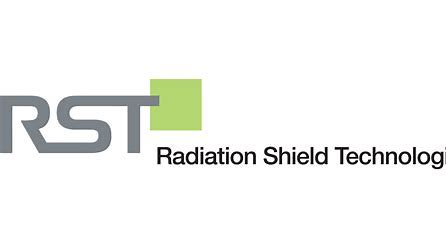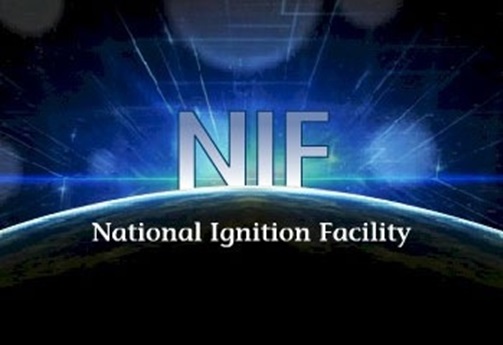There are many major threats to human safety and the environment. These include viral biological outbreaks, the release of toxic chemicals, incidents involving nuclear materials, heat stress, and major weather events. In order to deal with these threats effectively, protective suits must be available to emergency personnel.
Radiation Shield Technologies (RST) marks over two decades of innovation with Demon which is a unique fabric designed to safeguard frontline personnel, including military, nuclear industry workers, emergency response teams, Hazmat Teams, firefighters, law enforcement, and medical workers.
The company’s core technology, Demro, is engineered to combine radiation protection with “ease of use” in order to maximize effective radiological defense. RST’s main goal is to ensure that all Demro products are of the highest protective quality. This goal is achieved by working closely with our end users, developing new standards of personal radiation protection, and meeting the specific needs of those groups most at risk of exposure. After almost a decade of development, RST introduces Demron to the industries, governments and everyday people who, until now, have had no options for true personal radiation protection.
Demron is a special type of personal protective equipment designed to shield the wearer from exposure to ionizing and non-ionizing radiation. Demron is made from a proprietary blend of materials. It is considered to be one of the most effective and versatile forms of radiological protection available today.
Demron was first developed in 2003 by Radiation Shield Technologies (RST). It was initially designed to protect military personnel from the harmful effects of nuclear fallout on the battlefield. However, its unique properties and high level of radiation protection caught the attention of other industries, including medical, nuclear, and emergency services.
What sets Demron apart from other types of radiation protection is its ability to block virtually all types of ionizing radiation. These include gamma rays, X-rays, and beta particles. Traditional lead-based materials only offer partial protection. Demron is capable of absorbing and neutralizing radiation at the molecular level.
In addition to its superior radiation protection, Demron is also highly flexible and lightweight. This makes it comfortable to wear for extended periods of time. It can be utilized in a variety of settings, including hospitals, laboratories, nuclear power plants, and emergency response situations.
One of the most high-profile uses of Demron to date was during the cleanup of the Fukushima nuclear disaster in 2011. Japanese authorities provided Demron suits to workers responsible for removing radioactive debris. The suits helped to protect them from exposure to harmful radiation.
Several independent studies have also verified the effectiveness of Demron in protecting against radiation exposure. Researchers at Duke University found that Demron was highly effective at blocking gamma radiation at various levels of intensity.
Demron represents a major breakthrough in the field of radiological protection. It offers unparalleled levels of radiation shielding in a lightweight and flexible material. As the threat of nuclear incidents and other forms of radiation exposure continues to rise, Demron will undoubtedly be an important tool for protecting the health and safety of workers in a range of industries.
Blog
-

Radioactive Waste 923 – Radiation Shield Technologies Demron Suits Protect Against All Forms Of Nuclear Radiation
-
Nuclear News Roundup December 27, 2023
N.B. Power floats 2nd refurbishment of Point Lepreau nuclear plant cbc.ca
Japan earthquake casts cloud over push to restart nuclear plants reuter.com
Nuclear disasters–in–waiting science.org
Doomsday: What could drive Israel and Iran to start launching nuclear weapons? Thehill.com
Idaho researchers develop reactor digital twin world-nuclear.news.org
-

Geiger Readings for December 27, 2023
Ambient office = 80 nanosieverts per hour
Ambient outside = 100 nanosieverts per hour
Soil exposed to rain water = 101 nanosieverts per hour
Blueberry from Central Market = 73 nanosieverts per hour
Tap water = 158 nanosieverts per hour
Filter water = 148 nanosieverts per hour
-

Nuclear Fusion 59 – Success At The Nuclear Ignition Facility – Part 2 of 2 Parts
Part 2 of 2 Parts (Please read Part 1 first)
For many scientists, the results of the NIF fusion tests confirm that the laboratory is now operating in a new regime. Researchers can now repeatedly duplicate a goal they have been pursuing for more than a decade. Tiny variation of the laser pulses or minor defects in the diamond capsule can still allow energy to escape which results in an imperfect implosion. However, the scientists now have a better understanding of the main variables at play and how to manipulate them.
Annie Kritcher is the NIF’s lead designer for this series of experiments. She said, “Even when we have these issues, we can still get more than a megajoule of fusion energy, which is good.”
It is a long way from the successes at the NIF to the goal of commercial nuclear fusion generated electricity being connected to the grid. However, although the NIF is currently home to the biggest laser in world, it is not well-suited to that task. The NIF’s laser system is very inefficient. More than ninety nine percent of the energy that goes into a single ignition attempt is lost before it can reach the target.
Developing more efficient laser systems is one of the main goals of the DoE’s new inertial-fusion energy research program. This month, the DoE announced forty two million dollars to be spent over four years to establish these three new research centers that will work towards this and other advances.
This investment is the first coordinated effort to develop not just the technologies, but also the workforces required for a future laser-fusion industry according to Carmen Menoni who is a physicist heading up the hub at Colorado State University.
So far, most government investments in fusion energy research have gone into devices called tokamaks. Tokamaks are donut shaped and utilize magnetic fields to confine fusion reactions. This approach is under development at ITER which is an international partnership to construct the world’s biggest fusion facility near Saint-Paul-lez-Durance, France. Tokamaks have also been the recipients of many fusion investments in the private sector. However, dozens of companies are pursuing other approaches.
The time for a dedicated laser-fusion program is right according to Menoni. The decision to pursue it would not have happened without the recent NIF success. Menoni said, “We now know it will work. What will take time is to develop the technology to a level where we can build a power plant.”
Back at the NIF, Kritchner’s latest series of experiments feature a seven percent boost in laser energy. This should lead to even bigger yields. The first experiment in this test series was one of the successful ignitions which took place on the 30th of October. It did not break the record but an input of two and two tenths megajoules of laser energy yielded an output of three and four tenths megajoules of fusion energy.
Kritcher attributes the fact that it did not break the record for energy yield growing pains with the new laser configuration. It is designed to create more energy in the same sized gold cylinder of the previous set of experiments. Before moving to a bigger cylinder, Kritcher
says that her team is going to focus on changes to the laser pulse in order to produce a more symmetrical implosion. She said, “We’ve got four experiments next year.” -

Geiger Readings for December 26, 2023
Ambient office = 80 nanosieverts per hour
Ambient outside = 136 nanosieverts per hour
Soil exposed to rain water = 146 nanosieverts per hour
Bannana from Central Market = 115 nanosieverts per hour
Tap water = 82 nanosieverts per hour
Filter water = 69 nanosieverts per hour
-
Nuclear News Roundup December 26, 2023
Poland’s 1st nuclear project (3.7 GW) gets grid connection montelnews.com
A longer Gaza conflict’s implications for nuclear war with Iran israelnationalnews.com
South Korea, US conduct week-long firing drills near North Korea border reuters.com
The nuclear phantom from 2011 taipeitimes.com
-

Nuclear Fusion 58 – Success At The Nuclear Ignition Facility – Part 1 of 2 Parts
Part 1 of 2 Parts
In December of 2022 after a decade of effort, scientists at the National Ignition Facility (NIF) announced that they had set a world record because they created a fusion reaction that produced more energy than it consumed. This phenomenon is called ignition. They have now proven that the feat was no accident by replicating it four times more. The Biden administration is looking to build on this success by establishing three new research centers to help advance fusion science.
The NIF is a stadium-sized laser facility, housed at the Lawrence Livermore National Laboratory (LLNL) in California. The team achieved its goal of ignition in four of its last six attempts. They created a reaction that generates pressures and temperatures greater than those that occur inside the Sun.
Richard Town is a physicist who heads the lab’s inertial-confinement fusion science program at the LLNL. He said, “I’m feeling pretty good. I think we should all be proud of the achievement.”
The NIF was not designed to be a power plant. It is a facility to recreate and sturdy the reactions that take place during thermonuclear detonations after the U.S. stopped underground weapons testing in 1992. The higher fusion yields are already being used to advanced nuclear-weapons research. They have also stimulated enthusiasm about fusion as a limitless source of clean energy. U.S. secretary of state John Kerry called for new international partnerships to advance the commercialization of nuclear fusion at the COP28 climate summit in Dubai that was held last week. The U.S. Department of Energy (DoE) which oversees the NIF followed up by announcing the new research hubs. The new facilities will be led by Lawrence Livermore, University of Rochester in New York, and Colorado State University in Fort Collins.
Construction of the NIF was considered to be a leap of faith by many. Its success has had a real impact on the fusion community, as well as public perception. Saskia Mordijck is a physicist at the College of William and Mary in Williamsburg, Virginia. She said, “In that sense, what is important is that scientists said they could do something, and then they actually did do something.”
The NIF works by firing one hundred and ninety-two laser beams at a frozen pellet of deuterium and tritium which are isotopes of hydrogen. The pellet is housed in a diamond capsule suspended inside a gold cylinder. The resulting implosion causes the hydrogen isotopes to fuse resulting in the creation of helium and huge amounts of energy. On the 5th of December in 2022, for the first time, those fusion reactions generated about fifty four percent more energy than the laser beams delivered to the target.
The facility set a new record on the 30th of July this year when its laser beams delivered two megajoules of energy to the target which was the same amount as was delivered to the target in December of 2022. However, this time, the implosion generated about four megajoules of fusion energy which represented an increase of eighty nine percent over the input energy. Scientists at the laboratory achieved ignition during two more attempts in October of this year. The laboratory’s calculations indicated that two other attempts in June and September generated slightly more energy than input by the lasers. However, these attempts were not enough to confirm ignition.
Please read Part 2 next -
Nuclear News Roundup December 25, 2023
China approves construction of four new reactors world-nuclear-news.org
UK-Korean partnership to develop nuclear-powered cargo ships world-nuclear-news.org
Russia, India sign Kudankulam agreements world-nuclear-news.org
-

Geiger Readings for December 25, 2023
Ambient office = 87 nanosieverts per hour
Ambient outside = 122 nanosieverts per hour
Soil exposed to rain water = 122 nanosieverts per hour
Avocado from Central Market = 100 nanosieverts per hour
Tap water = 85 nanosieverts per hour
Filter water = 76 nanosieverts per hour
-
Nuclear News Roundup December 24, 2023
Grid connection for second Shin Hanul unit world-nuclear-news.org
Powerful quake in Japan reawakens concerns about nuclear power safety news.cgtn.com
Ulba-FA completes fuel production qualification process world-nuclear-news.org
